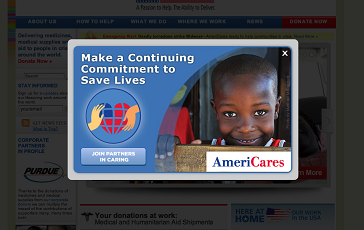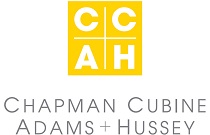
|
5 Challenges to Effective Integrated Marketing for Nonprofits
|
|
Posted by Eric Overman at Sep 12, 2013 07:00 AM CDT
|
Integration is not only a common buzzword these days, but also a goal of many nonprofit direct response and development plans. And, while many organizations work in multiple channels, many are still working to integrate their entire program. Also, there are many challenges to building and maintaining an integrated program, including five common ones I’ll introduce below.
But first, let me give a loose definition of what I mean by “integration”. Specifically, these challenges address building a direct response program (even if you start with just one campaign) with the goal of enhancing donor engagement and driving conversion with messaging and planned timing across multiple touch points. In other words, ensuring communications are centered on the donor’s experience with your organization as she consumes information -- and responds -- in what has become a very multi-channel way. But, admittedly, this isn’t always easy.
Here are five common challenges along with some hints at what you can do to make sure you are up to the task of meeting them. (And, the good news is that it is usually worth the effort!)
Challenge #1: Where to Start?
Maybe you are firing on all cylinders when it comes to building an integrated program. But if not, determining where start, or make your next investment, can be challenging.
Is your organization crawling, walking, or running when it comes to integrated marketing and donor communications? And be honest, because knowing what level of complexity is realistic at the start will help build a stronger program faster in the long run.
Remember, no matter where you start, integrated marketing requires some level of increased complexity and activity. The question is how much. If you are just starting, don’t get overly complex. Pick your biggest segments/program areas/campaigns and start there. And if you run into an obstacle, which you likely will, get as far as you can. Next time, you’ll go further!
 A great program area to consider for your next integration project is a Sustainer/Monthly Giving program. A good Sustainer program can become a cornerstone of your direct response program (if it’s not already), and multi-channel efforts have proven particularly effective in converting donors to sustainers. Plus, many organizations prefer their sustainers be driven online or converted by phone to encourage the use of credit cards instead of checks.
A great program area to consider for your next integration project is a Sustainer/Monthly Giving program. A good Sustainer program can become a cornerstone of your direct response program (if it’s not already), and multi-channel efforts have proven particularly effective in converting donors to sustainers. Plus, many organizations prefer their sustainers be driven online or converted by phone to encourage the use of credit cards instead of checks.
On the campaign side, the biggest direct response campaigns should be the first targets for building out or improving your integrated efforts. Year-End or your highest performing campaigns are a good place to start because your return will be higher by optimizing what is already successful.
What you can do:
- Identify and accept your organization’s life cycle stage and plan accordingly.
- Pick a recommended campaign/program area/segment and start planning 4 – 6 months in advance.
Challenge #2: Messaging & Content
As mentioned previously, it’s not good enough to be just working in multiple channels. It’s important to integrate your messaging across channels and platforms so that you can provide a donor-centric experience. That doesn’t mean using exactly the same words, but the theme and feel should be consistent across communications, all the way through the end of the desired action (i.e., donation/conversion). This also means additional planning -- possibly working with multiple internal departments, as well as possible development of additional content and stories highlighting the impact the donors have through your organization.
What you can do:
- Plot out Messaging and Content Strategy at beginning.
- Take stock of resources (tech, staff, photos, budgets) early.
Challenge #3: Data & Tracking
This can be a big one. While using and looking at data by channel may be familiar, more complex integration requires that our data provide a “holistic view” of what the donor has received and what actions she has taken. It is this information upon which many integration plans are built.
Might sound easy enough, but as many of us know too well, data often exists in different silos and platforms. Even for those systems that sync, the information flow must be understood to make sure we are getting the right message to the right donor at the right time. The same can be said about looking at the results: Make sure you look not just at the channel by itself, but also by the segments of what they received.
What you can do:
- Diagram existing data flow across channels, and look for where work-arounds would need to be built to sync the data or modify plans accordingly.
- Plan out results tracking procedures in advance.
- Don’t despair, just work within the constraints you currently have and try to fix them over time.
Challenge #4: Organization Buy-In & Participation
As if you are not working hard enough making this all happen, whether walking or running, you probably have to “sell” others in your organization on this concept as well. You may need more resources and time from others in your organization to start pushing out or increasing integrated campaigns. And, the more complex both your organization and your program are, the more that involvement is needed from across your organization. And often, this means proving that it’s worth it. Fortunately, the benefits of integrating marketing are well documented.
What you can do:
- Start Cross-Departmental Communications and Planning well in advance
- Be prepared. Here are some good resources:
Challenge #5: Increased Complexity & Activity
The first four challenges all add up to our fifth challenge: the increased complexity and activity that can come with an integrated program. So, make sure you plan for this fact. You’ll need to dedicate more time (and likely resources), and so will others within your organization.
What you can do:
- Build an organization-wide communication calendar (view a sample basic multi-channel calendar).
- Start planning well in advance.
- Look for easy-win “value adds” to fold in (ecards, print gift cards, sustainer upgrades, thank you videos, ecommerce).
The good news is that integrated marketing frequently pays back returns. Not to mention, and largely in part because, it helps you drive an experience where your donor feels more aligned with your mission and impact.


















